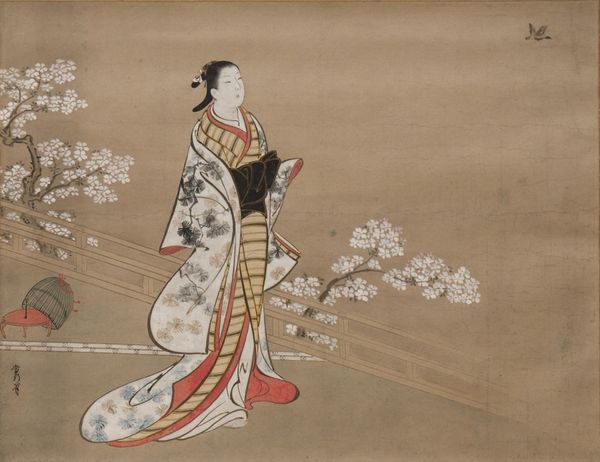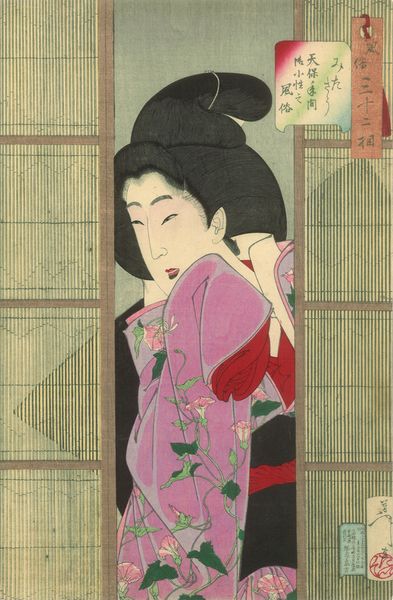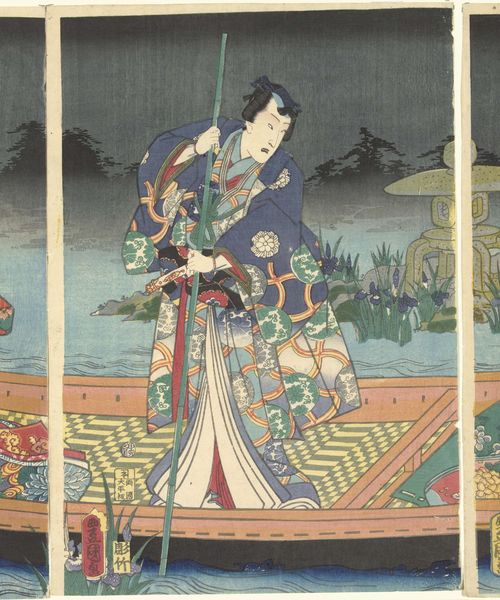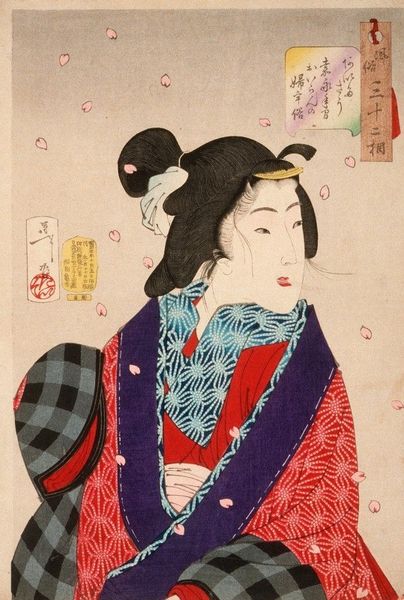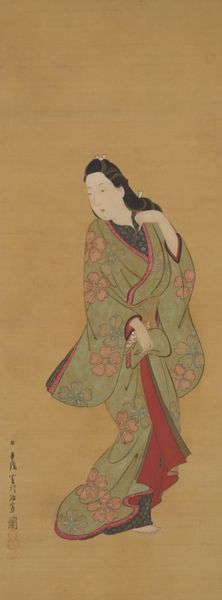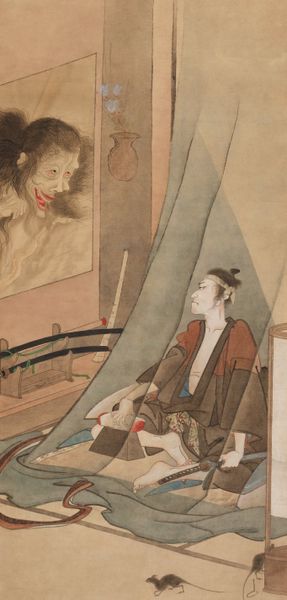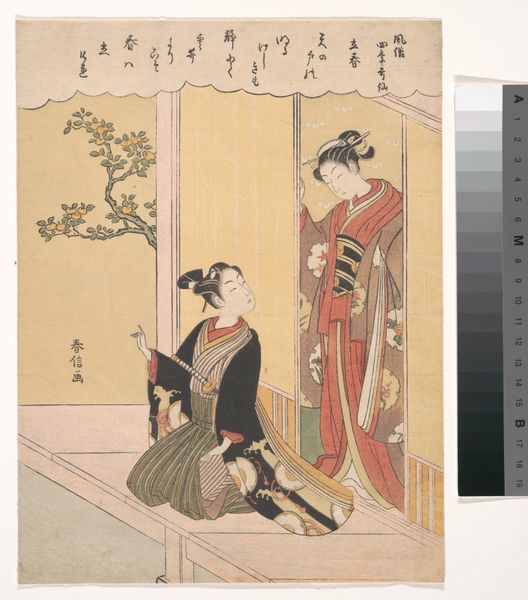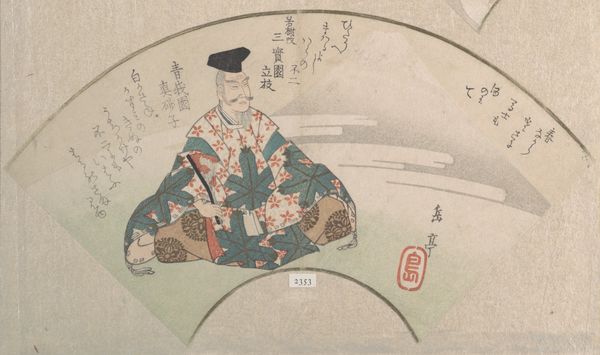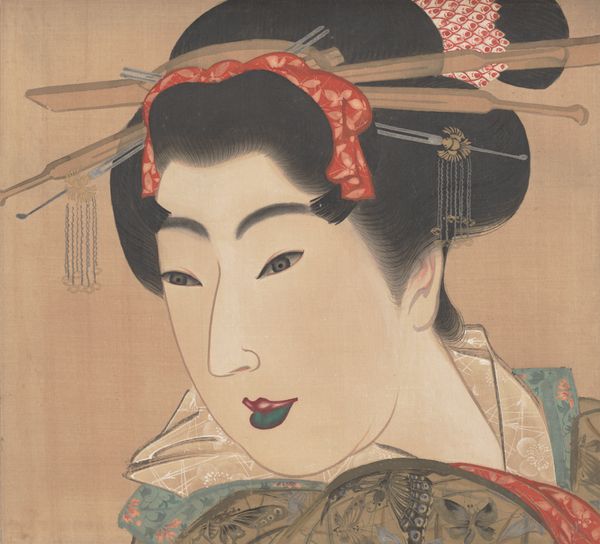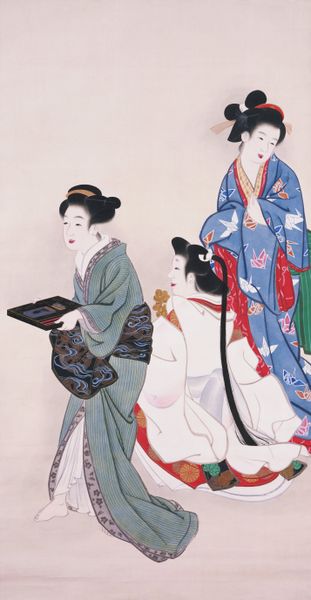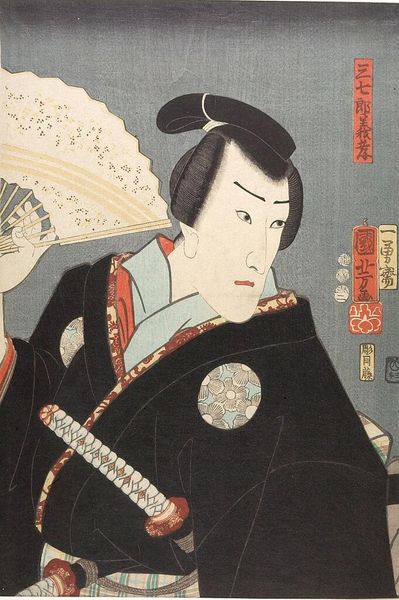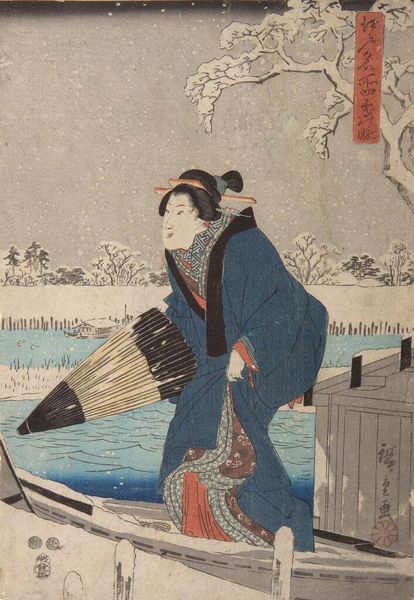
tempera
#
portrait
#
tempera
#
asian-art
#
ukiyo-e
#
japan
#
figuration
#
genre-painting
Dimensions: Image: 35 7/8 × 12 1/8 in. (91.1 × 30.8 cm) Overall with mounting: 68 7/8 × 16 3/4 in. (174.9 × 42.5 cm) Overall with knobs: 68 7/8 × 18 3/4 in. (174.9 × 47.6 cm)
Copyright: Public Domain
Curator: Here we have Katsukawa Shuncho's "Beauty Looking at the Moon," tempera on paper, created between 1783 and 1795. What are your initial thoughts? Editor: There’s an undeniable serenity to it, isn't there? The subdued color palette, the slender vertical format, it evokes a sense of quiet contemplation. It’s as if the very act of viewing it invites one into that space of introspection. Curator: I agree. Notice how Shuncho employs the visual language of Ukiyo-e to create a sense of ethereal beauty. The delicate lines, the flat planes of color—these compositional choices guide the eye and focus our attention. Consider the stark expanse of the paper versus the meticulous detail of the woman's kimono and the almost geometric formality of the adjacent room screen. Editor: That very kimono tells a story, doesn’t it? Look at the labor embedded in those textile patterns, each motif painstakingly rendered; the floral design perhaps suggesting a life of restrained elegance, while the inclusion of a chicken implies more mundane links to domestic life and material comfort. Who would have crafted this? And what status would someone wearing that type of cloth hold? Curator: Fascinating questions. Beyond its material origins, one could also explore this woman's place within a patriarchal society. The moon, traditionally a symbol of feminine power and cyclical time, aligns directly with the beauty, creating symbolic equivalency. Is this artwork an objectification or is there agency here? Is it an affirmation or subversion of conventional aesthetics? Editor: We can't forget that even the pigments are derived from somewhere. They had to be painstakingly mined and processed. Even the paper itself signals a certain degree of access and privilege to participate in such cultural expression. Curator: Indeed. This is precisely the enduring quality of great art. It functions on multiple layers, offering aesthetic pleasure but also inviting further contemplation and inquiry. Editor: This was an invitation to dig a little deeper and consider art beyond the beautiful aesthetic!
Comments
No comments
Be the first to comment and join the conversation on the ultimate creative platform.
